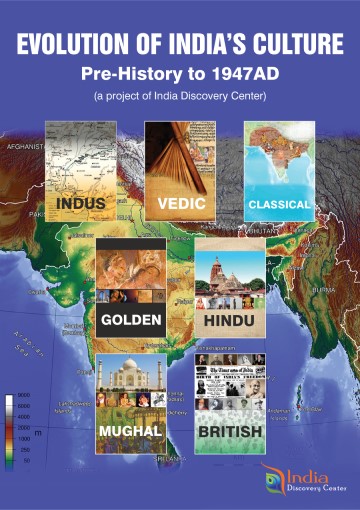Contribute
| India Vedic Period (2000BCE To 700BCE) – Science And Technology |
Bijoy Misra
03/04/2021
India Vedic Period (2000BCE to 700BCE) – Science and Technology Figure 1. A modern recitation of the Vedic hymns in a fire ritual. The pitch unison is considered a necessity. Figure 2. A modern version of the traditional Veena instrument (Wikipedia) Figure 3. An artist’s rendering of a Vedic Ayurveda laboratory around 1000BCE Vedic period saw the advent of iron in the Indian subcontinent. Iron smelting needed higher temperature and was achieved by specially created blow ovens that can let the slag flow out. By adding carbon in the form of leaves and twigs, iron could be hardened to be made into sharper edge instruments and weapons. With the development iron tools, carpentry developed. Rg Veda mentions of city “made of iron†RV VII.15.14. Well-designed wooden utensils and kitchen tools continue to be used as a relic of the Vedic period technology. Figure 6. Two solid copper statues excavated in north India (from the book by Upinder Singh, Reference 5). Dr. Bijoy Misra serves as the President of India Discovery Center and leads the Science and Technology track in the project on "Evolution of Indian Culture: Pre-history to 1947AD". More information and updates on the project are available at https://www.facebook.com/Evolution-of-Indian-Culture-An-IDC-Project-107749391111922 More information on India Discovery Center is available at https://www.indiadiscoverycenter.org (c) Copyright 2021 India Discovery Center, Inc. All rights reserved.
Various time measurement techniques like water clocks, shadows, and solar elevation angles were used to fix various conjunctions as observed from the ground. Books on astronomy and geometry were compiled. The decimal numbers appear to be in use. The lunar orbit was measured by association with twenty-seven stars “nakshatra†making out a “lunar month†eventually with twelve “solar months†to form a year.
The production of fire was considered mystical and the flames were viewed as animated. Animation was assumed as a natural property of all objects whether in motion or steady. This animation principle was transformed to a scientific thought that each object had a vibration resulting in an “expressive voice†Vak. (Reference 2) Exploration of this voice and its simulation became the basis of Vedic science. The concept of hymnal poetry was built on communicating to the desired object through rhythm, syllables and intonation. Phonetics and pronunciation became a new science (Figure 1).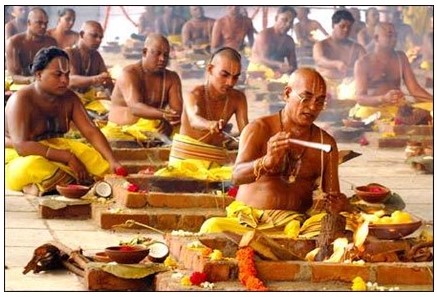
It was postulated that there were four steps in speech formation. Musical instruments like a plucked lute called veena (Figure 2) was fabricated to help extend the human octaves. Made out of hollowed out hardwood, the instrument was played by women to support the vedic recitation (Reference 3). Drums, flute, conch and cymbals were added to create the festive atmosphere of cosmic connections. Complete immersion in expression produced the therapeutic mantra. 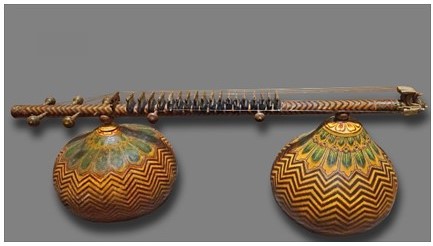
Healing through mantra became an important aspect of the technology of Ayurveda, the science of health. Ayurveda consisted of discovering the healing herbs and experimenting on the techniques of their application. Agriculture and botany became a part of science. Juice extraction, drying and grinding, paste making and distilling were widely used (Figure 3). Massive health and nutrition books were produced. A sage Sushruta is known to have compiled a book on surgical procedures during the late Vedic Period (Reference 4).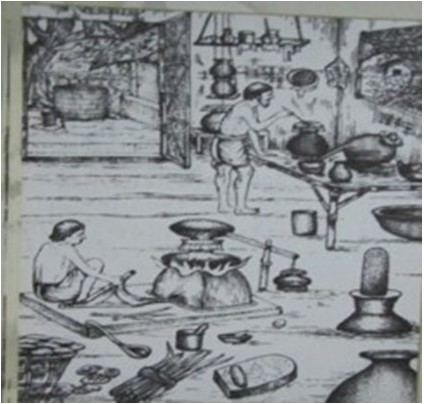
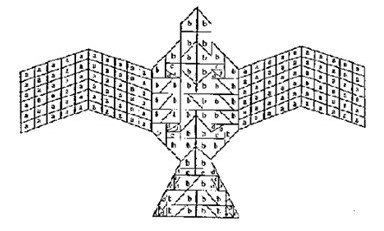
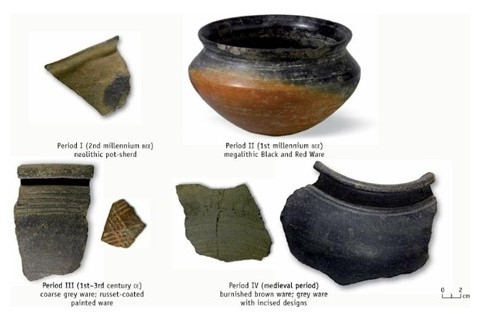
Figure 5. Excavated pottery products from the Vedic era (from the book by Upinder Singh, Reference 5.)
Lost wax technology continued to create life-like solid copper objects. Several specimens have been discovered (Figure 6). Chariots with three wheels are referred in the Rg Veda(I. 183.1). There is reference to marine travel RV X.56.5. Figure 6. Two solid copper statues excavated in north India (from the book by Upinder Singh, Reference 5).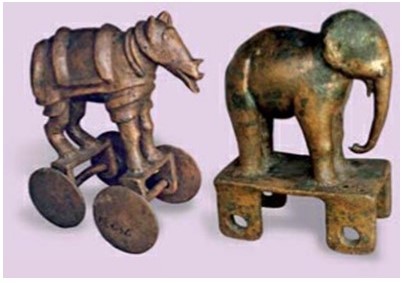
1. Eight Upanisads (commentary of Shankaracharya) Vol II - Swami Gambhirananda, Advaita Ashrama, Kolkata, India.
2. Vak Sukta – Rg Veda X.125
3. https://en.wikipedia.org/wiki/Veena
4. Sushruta Samhita - http://sushrutaproject.org/
You may also access this article through our web-site http://www.lokvani.com/
